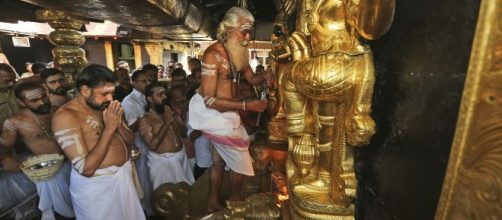The Shrine at Sabarimala is one of the holiest temples for Hindus. For centuries women between the ages of 10 and 50 are not allowed to worship Lord Ayyappa, the deity of the shrine. The reason given is that the Lord was celibate. Hence no women should be allowed to enter the holy Shrine. Last year in a landmark judgment by a five-member bench with a 4-1 judgment, the Supreme Court struck down this practice and allowed women of all ages to enter the temple to pray and worship. The BBC has reported that a larger bench would hear the matter.
Hindu fanatics
This ruling incensed Hindu fanatics who filed a review petition in the supreme court. Over 40 petitions were asking for a review. The supreme court clubbed all of the petitions and constituted a five-member bench to decide on the issue. People were expecting a quick judgment from Justice Gogoi, who is retiring this month.
The Supreme Court has not set aside the earlier judgment, but it has widened the scope of judicial intervention. It has constituted a seven-member bench that will hear the case. The supreme court has also indicated that the hearing will not be confined only to the Sabarimala temple but will cover practices indulged in by Muslims, Bohra community, Hindus, and Parsis as well.
A broader scope of the new bench
The bench will review the earlier judgment that allowed women to enter the holy shrine. It will also examine and adjugate on religious practices that mitigate against women's self-respect of other religions. The bench will now examine the rights of Parsi women who are denied entry into the fire temple and the Tower of silence in case they marry a person outside their religion. It will also examine the practice of the Bohra Muslim community on mutilating the genital organs of women as well as the entry of women in the Masjid. This has been reported by Nerws18.
The bench will also examine practices of the Hindus and Jains which have religious sanctity and are detrimental to the rights of women.
The bench will examine all these discriminations which are not in consonance with the guarantee of equality for all women and men in all spheres of life.
The constitution of this bench is nothing short of revolutionary. It is a pity that such an important bench to examine discrimination against women in India has been constituted after 72 years of independence. This action of the Supreme Court should have been completed much earlier.
Hindu reforms
The reforms in Hinduism commenced during the days of the Raj when various practices like Sati and child marriage were banned. The Indian Constitution grants the right to life and equality. Most of these practices indulged in by the various religious sects are against the spirit of the constitution.
The bench has not yet been constituted, and perhaps it may take a year or two before it can give its decision. However, it must be borne in mind that the Supreme Court gave judgment in the Ayodhya case within 70 days by hearing the case on a daily basis.
Similarly, there is a case to examine the entire gamut of religious practices of all the Hindus, Muslims, and Parsis and give an expeditious decision. A decision of the bench will go a long way in restoring the rights of Indian women of all religions.
The Modi government is a government with a difference, and a lot of good has happened during its tenure. The government has also committed to bringing Muslim personal law within the ambit of the Indian Constitution by banning polygamy. The Modi government has already banned triple talaq( instant divorce), and there is every hope the Supreme Court will soon adjudicate on the status of women in India


